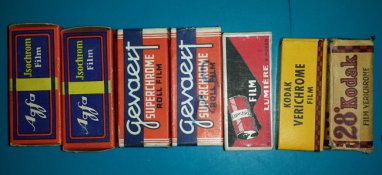typicalaussiebloke
Member
- Joined
- May 30, 2014
- Messages
- 49
- Format
- Medium Format
G'day all.
I shoot vintage film as a hobby and have shot over a dozen B&W films of the 1930s and 40s. Anyways I am going down to Tasmania in a few days and plan to capture some vintage 19th century heritage buildings on some 1930s 116 films, the problem is though I am not sure if they are safety base or nitrate base. Also been trying to find info on taking nitrate still films on public transport, in my case an airplane and have came across a couple of sources that say yes you can take nitrate film on an aircraft and no you can't and I am confused. On this Kodak pdf http://www.kodak.com/global/en/corp/environment/kes/pubs/pdfs/H182.pdf on page 4 it says nitrate film can be transported in a passenger plane within it's specified limits, and this pdf article http://www.amianet.org/groups/committees/nitrate/documents/NitrateIGNov08.pdf on page 3 says nitrate can't be taken on any passenger plane under any circumstances. So I am confused!
I have attached a pic of the films I'm unsure of below, they include:
2 x AGFA Isochrom 116 films (expired 1932)
2 x Gevaert Superchrome 116 films (expired 1949)
Lumiere 116 film (expired 1934)
Kodak Verichrome 28 120 (expired 1949)
Kodak Verichrome 120 (expired 1952)
Can anyone here tell me if any of those are nitrate or safety base as I am not sure? If they are nitrate are they prohibited from being taken aboard a passenger plane and can get confiscated at the security check??? If I can't take them on a plane then I will of course leave them at home.
Any help on this will be much appreciated.
Cheers
Troy
I shoot vintage film as a hobby and have shot over a dozen B&W films of the 1930s and 40s. Anyways I am going down to Tasmania in a few days and plan to capture some vintage 19th century heritage buildings on some 1930s 116 films, the problem is though I am not sure if they are safety base or nitrate base. Also been trying to find info on taking nitrate still films on public transport, in my case an airplane and have came across a couple of sources that say yes you can take nitrate film on an aircraft and no you can't and I am confused. On this Kodak pdf http://www.kodak.com/global/en/corp/environment/kes/pubs/pdfs/H182.pdf on page 4 it says nitrate film can be transported in a passenger plane within it's specified limits, and this pdf article http://www.amianet.org/groups/committees/nitrate/documents/NitrateIGNov08.pdf on page 3 says nitrate can't be taken on any passenger plane under any circumstances. So I am confused!
I have attached a pic of the films I'm unsure of below, they include:
2 x AGFA Isochrom 116 films (expired 1932)
2 x Gevaert Superchrome 116 films (expired 1949)
Lumiere 116 film (expired 1934)
Kodak Verichrome 28 120 (expired 1949)
Kodak Verichrome 120 (expired 1952)
Can anyone here tell me if any of those are nitrate or safety base as I am not sure? If they are nitrate are they prohibited from being taken aboard a passenger plane and can get confiscated at the security check??? If I can't take them on a plane then I will of course leave them at home.
Any help on this will be much appreciated.
Cheers
Troy












